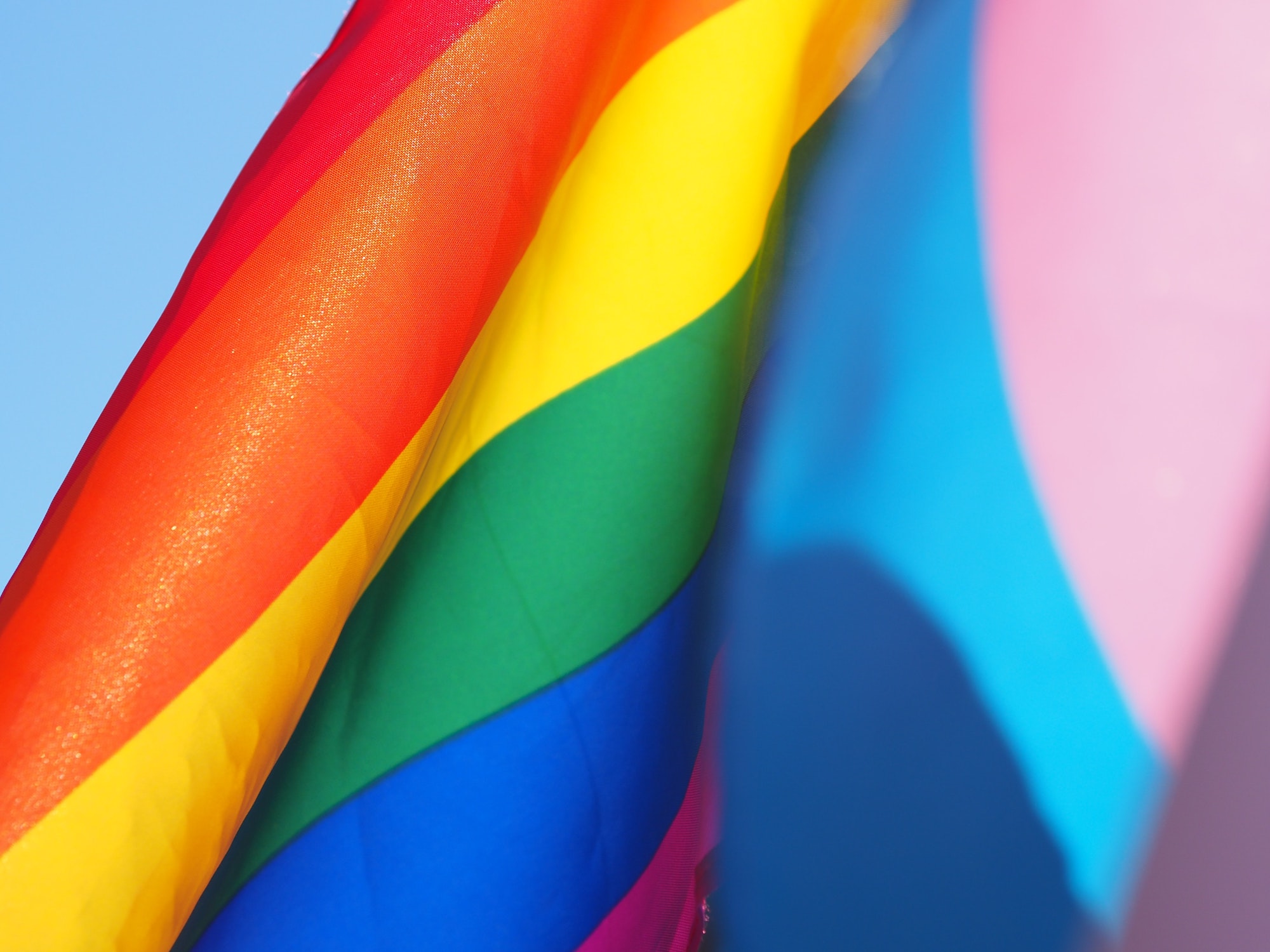What do consumers actually think about brands getting involved with Pride?

Say hello to Attest Investigates! A series where I use the Attest platform to test popular hypotheses and answer your burning questions.
As a trained scientist, I am obsessed with experimentation, empiricism and using data to make decisions. We’ll delve into all things consumer research, using a scientific analysis style to lift the lid on the most important unknowns for brands, as requested by you!
Introduction and hypothesis
It’s June, and like clockwork, brands are publishing fantastic content about Pride and LGBTQ+ causes. This is absolutely to be applauded and encouraged – it’s incumbent on brands and their leadership to be vocal and supportive about social issues, and to create spaces in their companies where members of the LGBTQ+ community can feel welcomed and enthused.
Indeed, here we are, publishing this article about Pride, during Pride month. The irony is not lost (really!). We’re getting involved right when it’s at the forefront of the agenda.
But what do members of the LGBTQ+ community actually think about all of this? How do they feel when brands appear to show solidarity with them for this month, and overt support disappears for the next eleven? Does the LGBTQ+ community notice or care that brands don’t necessarily talk about it for the rest of the year?
Here’s our Attest Investigates hypothesis: consumers don’t like that brands only appear to show solidarity with and support for the LGBTQ+ community for the month of June.
Some expected results – and some really enlightening ones – below…
Method
As is our way, we ran some surveys, to generate and share real data on the topic!
Two surveys, to be precise. We asked 351 American and 250 British members of the LGBTQ+ community for their views on brands getting involved with Pride, and how they think brands can do it better.
Why did we only ask members of the LGBTQ+ community, I hear you ask (possibly)? While everyone’s views are always welcome and valuable, on this particular piece of research we felt it important to hear directly from the community most affected by LGBTQ+ issues and causes. It would of course be interesting to run the same research to a selection of the wider public – a follow-up perhaps…
Results
We kicked off by asking our respondents to describe their attitudes towards brands getting involved with Pride. Both the US and the UK came back with the same order of responses:
- I love it! The more the merrier – 43% in the US and 34% in the UK
- Brands should redirect their Pride efforts to better support LGBTQ+ causes – 33% in the US and 31% in the UK
- I think brands get it just about right – 15% in the US and 20% in the UK
- I think brands are too vocal about LGBTQ+ issues – 9% in the US and 14% in the UK
It’s significant that a ~30% larger share of Americans than Brits love brands getting involved with Pride.
And while Brits are less keen to say they love brands getting involved, they are interestingly more willing to say they think brands are too vocal about Pride. Perhaps there’s a trend here: are Brits generally less keen on open displays of celebration? Another future survey right there…
A key takeaway from this for brands is that almost a third of people from both countries think brands should do better to support LGBTQ+ causes. At the same time, very few people in the US or UK are actively unhappy about brand involvement in LGBTQ+ issues.
Something is better than nothing, but not everything is right. So, we know the overall sentiment, but what should brands be doing then? We pulled at this thread later in our research.
US and UK at odds over brands’ LGBTQ+ coverage
Our research threw up a very interesting discrepancy between Americans’ and Brits’ views on how long-term brands’ support of LGBTQ+ issues is.
In the US, 43% of people say they see consistent support of the LGBTQ+ community throughout the year, compared to just 30% in the UK. Conversely, 38% of Americans think brands say less about LGBTQ+ causes once Pride month is over, compared to nearly half of Brits saying the same (50%).
What can we glean from this? Perhaps American brands (and/or American departments of global brands) are simply more vocal about LGBTQ+ causes year-round. Or maybe it’s another inkling of a more skeptical populace in the UK.
What do you put this down to? We’d love to hear your ideas on ‘Why’ (and we may follow-up and test much more on exactly this!).
Do people care about brands rainbow-washing?
One of the slightly contentious aspects of brands getting involved with Pride is the idea of ‘rainbow-washing – the use of LGBTQ+ imagery and messaging to portray companies as supportive and charitable (sometimes just for one month). A key visualisation of this is the addition of Pride rainbow flags to brands’ social media profile images. Loads of brands add a rainbow to theirs to show their support and solidarity during Pride, only to remove it come July.
We wanted to find out what members of the LGBTQ+ community really think about this, so we asked them.
You might expect almost unanimous desire for brands to show more meaningful action, but this didn’t turn out to be the case.
The top opinion is the expected one. Most people think adding rainbows needs to be done alongside other more meaningful action – 49% of Americans and 49% of Brits agree about this.
What’s surprising is that 45% of Americans and 36% of Brits think it’s fine if all brands do is add a rainbow to their branding, even if it’s just for the month of June. Our assumption was that a significantly smaller number of LGBTQ+ people would hold this opinion.
As an incidental coda to the rainbow imagery question, 7% of Americans and 14% of Brits think ‘it’s pointless’ to add the rainbows to branding. Another interesting thread to pull at for future research would be why these people think it’s pointless.
So what should brands be doing to support LGBTQ+ causes?
We asked our respondents to rank activities brands can do to support the LGBTQ+ community. The top 3 activities placed in number 1 spot for the US were:
- Donating to LGBTQ+ charities – 25%
- Improving their hiring policies to better include LGBTQ+ people – 22%
- Show LGBTQ+ people and scenarios in their advertising and marketing materials – 14%
And the UK’s top 3 were:
- Donating to LGBTQ+ charities – 21%
- Improving their hiring policies to better include LGBTQ+ people – 20%
- Show LGBTQ+ people and scenarios in their advertising and marketing materials – 18%
There turned out to be some interesting variances in what different generations deem most important here. For example, when we look at under 35s in the UK, there’s a big jump in people who said that donating to charity was most important – 28% said this compared with 17% of over 35s.
You can filter different demographics in these links to the Attest dashboard:
Does any of this affect purchase intent?
Short answer: yes.
Longer answer: yaaaassssssss.
Helpful answer: we asked our lovely respondents how often they choose a brand because of their stance on LGBTQ+ issues. The results were as follows:
US:
- All of the time – 34%
- Sometimes – 52%
- Rarely – 10%
- Never – 5%
UK:
- All of the time – 23%
- Sometimes – 50%
- Rarely – 17%
- Never – 9%
It seems the Brits care slightly less about a brand’s visible support of the LGBTQ+ community (with a combined 26% saying ‘rarely’ or ‘never’). In the US that number shrinks to 15%. Either way, there’s enormous purchasing power led by how consumers see their support of the community.
Big take-away: If brands did follow through and actively support the LGBTQ+ community year-round, those brands would be handsomely rewarded. A real example of where doing the right thing for LGBTQ+ consumers and brand shareholders are immediately aligned!
Future scope
As expected, there are subtle differences (and a few not-so-subtle differences) between results from the US and the UK. It would certainly be interesting to delve into this more in future, adding more ideas, more demographics or LGBTQ+ analyses – more perhaps as a social study rather than a marketing one, but data is data, and insights are insights. And we’d love to find out what consumers from our other 47 markets around the world think about this issue.
As we mentioned earlier, it would be interesting to hear the views of other demographics, in addition to our surveyed members of the LGBTQ+ community. An early hypothesis on that would be this: people who don’t explicitly identify as members of the LGBTQ+ community probably have a less emphatic overall opinion of how brands communicate with and support LGBTQ+ causes. There’s a lot to be said for lived experiences.
Another interesting avenue of exploration is how these trends will change over the coming months and years. There’s no doubt (we presume – we could do some research into this…) that since the summer of 2020, people are generally more attuned to the visibility and support of minorities. It’ll certainly be interesting to find out whether this trend continues, or even grows or recedes.
Conclusion
Our original hypothesis (reminder: consumers don’t like that brands only appear to show solidarity with and support for the LGBTQ+ community for the month of June) has been proved both true in a few ways, yet also false as an overall blanket statement. In reality, there’s a lot more to this topic – and a lot more detail in underlying consumer beliefs, passions and preferences – than meets the eye!
While it’s clear that consumers would prefer brands to get involved in more meaningful pro-LGBTQ+ activities, they’re also surprisingly fine with brands showing support just for June, or with them simply adding a rainbow to their branding. There are a number of things that brands can do even better, that are both seen as more beneficial for the LGBTQ+ community, and can help the brand create greater positive social/market impact.
But the crux of the issue from a marketing perspective is this: your company’s support for the LGBTQ+ community could be crucial to your bottom line, and your reputation. You may not lose many customers by showing seasonal support for the LGBTQ+ community, but you’re missing out on a whole lot more by not doing it year-round, and by missing out on the real actions/ideas that matter most.
Attest helps us find out more about these topics, and that’s why we wanted to generate and share some real data from the people that matter most, to add to the debate.
Get started with Attest today
See how you can use data to make great decisions.
Tell us what you think of this article by leaving a comment on LinkedIn.
Or share it on:
